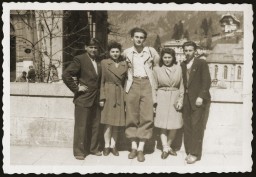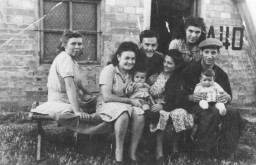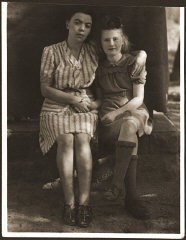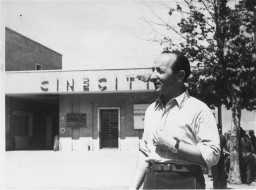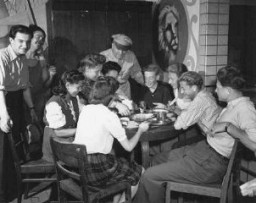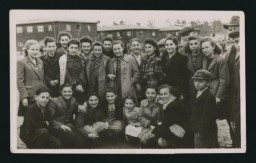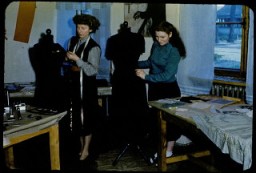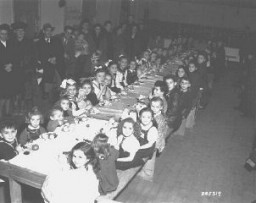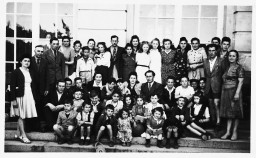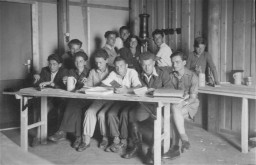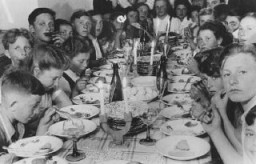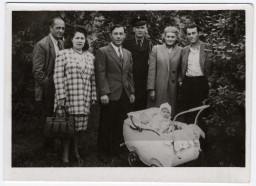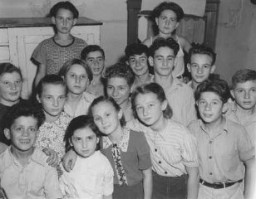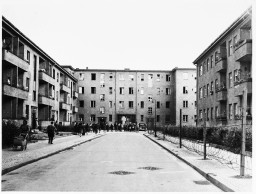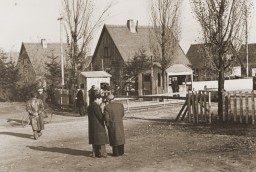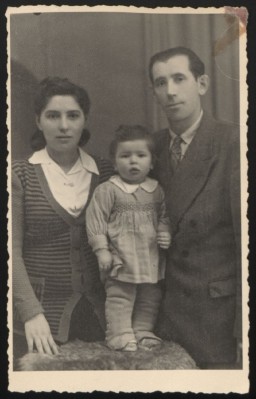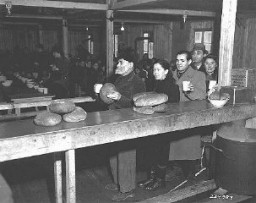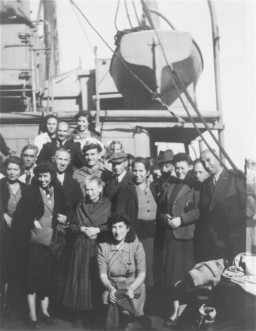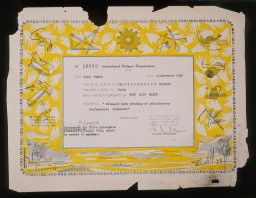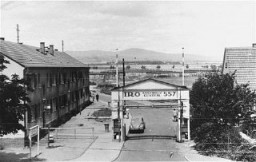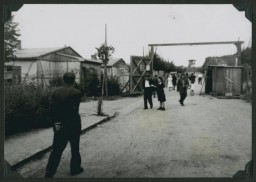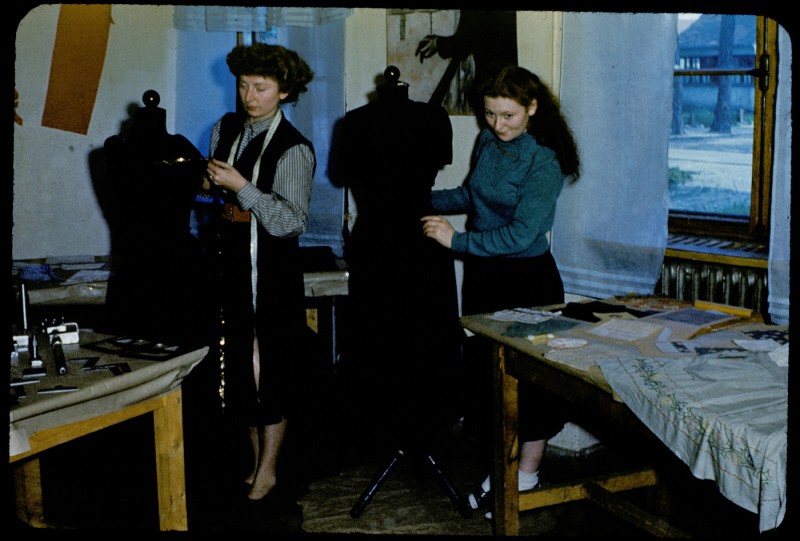
Foehrenwald Displaced Persons Camp
For the Jews who survived the Holocaust, the end of World War II brought new challenges. Many could not or would not return to their former homelands, and options for legal immigration were limited. In spite of these difficulties, these Jewish survivors sought to rebuild their shattered lives by creating flourishing communities in displaced persons camps in Germany, Austria, and Italy. In an unparalleled six-year period between 1945 and 1951, European Jewish life was reborn in camps such as Foehrenwald.
A major displaced persons (DP) camp in the American zone of occupation of Germany, southwest of Munich, Foehrenwald was among the largest and most significant of the Jewish DP installations. It was established by the US Army near the town of Wolfratshausen shortly after liberation. Foehrenwald's structures were originally built in 1939 to house employees of IG Farben; during the war, a number of structures were used to house forced laborers. The structures were converted into a camp for Jewish refugees in June 1945. A large number of Foehrenwald's DPs transferred there from Feldafing and Landsberg in late 1945. The housing conditions of Foehrenwald, in comparison to other camps, were far superior: the Foehrenwald residents lived in small but solid, centrally heated homes that had been evacuated by their German inhabitants rather than requisitioned and laid bare.
Foehrenwald was originally an international displaced persons camp, which, in addition to Jewish DPs, also housed non-Jewish DPs from Poland, Yugoslavia, Hungary, and the Baltic states. It was changed to a strictly Jewish DP camp on October 3, 1945, after Eisenhower's September visit to Feldafing, when he declared it overcrowded with poor living conditions.
From 1946–1948, Foehrenwald ranked as one of the largest Jewish DP centers in the American zone of Germany. It was the third largest Jewish DP camp, after Landsberg and Feldafing. The population of Foehrenwald fluctuated, but in the early years, it was well over 4,000 (October 1945, 3,000; December 1945, 4,938; January 1946, 5,300).The birth rate was rapid in the camp and within 15 months of its opening, approximately 200 women in Foehrenwald were pregnant at the same time. The residents of Foehrenwald quickly became a forceful refugee voice, and staged mass protests, particularly against the British captures of Zionist underground operatives in Palestine and the Exodus 1947.
Foehrenwald was a center of orthodoxy. The inhabitants of the camp had very little contact with the outside. Foehrenwald had a rich educational and cultural life. There was a school for children, an ORT vocational training institute, and a yeshiva (religious academy) with 150 students. The Foehrenwald yeshiva also served as the administrative headquarters for all the yeshivot in the American zone. The camp supported theatrical and musical activity and published a weekly newspaper entitled Bamidbar (The Desert), which became a medium of literary expression for camp inhabitants. In September 1947, the Bamidbar staff published a 100-page almanac of Foehrenwald, documenting many aspects of the camp's life.
Foehrenwald had a police force, fire brigade, youth home, disciplinary commission, post office, and hospital. The camp committee supervised an extensive educational system as well as a camp court. The courts, sometimes called "courts of honor", had only a moral and advisory role. They did not have any real jurisdiction or power of enforcement. They dealt with cases of violence between DPs, between DPs and Germans, and between DPs and Americans. The court also ruled on several Kapos living in the camp.
To provide for the many youngsters in the camp, Foehrenwald organized summer camps and many kibbutzim (Zionist communes). The kibbutzim and agricultural training farms represented nearly every platform of postwar Jewish politics. The spectrum included kibbutzim from Kadima, Dror, Bnai Akiva, Poel ha-Dati, Ohel Sarah, Poale Agudat Yisrael, Tel Yitzchak, and others. Sport was also a very popular activity, with organized competitions sponsored by the camp.
As a result of its superior conditions, flourishing activity, and able UNRRA leadership by Henry Cohen, Foehrenwald became a highly desirable place for DPs to live. Consequently, a significant population of illegal DPs—people who had left the DP camps to go to Israel, but had returned illegally to Germany after finding life in Israel not as they had imagined—lived in the camp. A tuberculosis epidemic in summer 1946 (382 cases) caused enough concern among the camp's central committee to warrant the creation of a Committee of Jewish Tubercular Patients in Foehrenwald. Particularly active from 1951 until 1955, the TB committee eventually became one of the longest-standing representative voices in the camp, serving as a mouthpiece for the "die-hard" DPs who, unable to emigrate, remained in the camp long after most Jewish DPs had left Europe. Though a JDC presence remained in the camp at least until 1954, Foehrenwald was taken over by the German administration on December 1, 1951.
By June 1950, all those who had wanted to leave the camp and were able to leave had done so. Many had emigrated after the founding of Israel and the War of Independence. Only the old, the sick, and their families remained. Foehrenwald was originally supposed to close at the end of 1949, but it stayed open because there were still many people who had nowhere to go. Many camps did close, however, and the remaining DPs were consolidated into a few camps, Foehrenwald being one of them. Foehrenwald was the final DP camp to close, functioning until 1957 as a home for Jews who had no place to go.
Series: Displaced Persons Camps
Critical Thinking Questions
- What challenges did survivors face in the DP camps?
- What challenges did the Allies face in establishing and supervising DP camps?
- What responsibilities do (or should) other nations have regarding refugees from war and genocide?
Further Reading
Koenigseder, Angelika and Juliane Wetzel. Lebensmut im Wartesaal. Frankfurt am Main: Fischer Taschenbuch, 1994.
Schroder, Joachim. Politische und kulturelle Geschichte der judischen displaced persons anhand des von den USA verwalteten Lagers Foehrenwald in der amerikanischen Besatzungszone. Self published, 1990.

